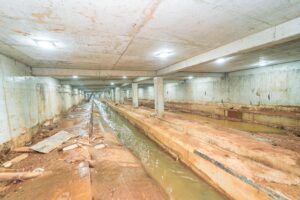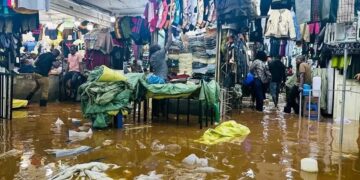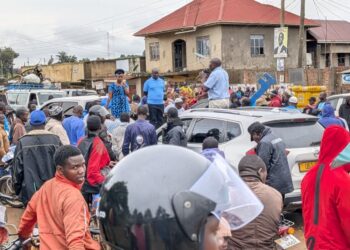OPINION
The recent seasonal floods that submerged downtown Kampala, causing significant property damage and tragic loss of life, are a stark reminder of a persistent, man-made crisis towards climate change.
This is not merely an act of nature but a consequence of systemic failures in urban planning and environmental management. To move beyond this cycle of loss, Kampala must adopt a holistic, strictly enforced, and climate-resilient flood control strategy.
The causes of Kampala’s flooding are well-documented yet largely unaddressed for instance rapid, unplanned urbanization, extensive encroachment on vital wetlands and drainage channels, and poor solid waste management that clogs the existing inadequate drainage infrastructure.
Nakivubo Channel, a primary drainage system for the city, has become a focal point of contention, with recent commercial developments accused of severely impeding water flow. when wetlands, the city’s natural buffers, are replaced by concrete and steel, the rainwater has nowhere to go but into homes and businesses causing a stagger in both economic and social costs
Beyond financial impact, health risks from contaminated water and the emotional toll on affected communities are immeasurable. The current situation is unsustainable and demands decisive action that goes beyond reactive, post-disaster visits by government officials and relevant stakeholders.

Kampala Capital City Authority (KCCA) and its partners are implementing various initiatives, including the expansion of some drainage channels and piloting blue-green infrastructure solutions like rainwater harvesting and regreening projects. These are commendable steps, but their effectiveness is undermined by the ongoing, influential development that flouts environmental regulations.
Securing downtown Kampala requires a multi-pronged, non-negotiable approach and to begin with, there must be zero tolerance for construction in wetlands and flood-prone areas. Existing illegal structures impeding drainage must be addressed, and all future developments must adhere to stringent, climate-resilient building codes.
The existing Drainage Master Plan needs full implementation, with sufficient funding allocated for expanding and maintaining the primary and secondary drainage networks. This must be complemented by investments in modern, large-scale engineering solutions where appropriate, similar to systems in flood-resilient cities globally.
A comprehensive and sustainable waste management system is crucial including regular desilting of channels, providing adequate garbage collection points, and fostering community behavioral change to stop the dumping of waste into waterways.
The Greater Kampala Integrated Flood Resilience Partnership, which involves public, private, and civil society actors, should be strengthened and replicated city-wide. Also engaging communities in designing and maintaining local solutions is vital for long-term success.
The time for counting losses is over, the government and KCCA must prioritize public safety and environmental integrity over short-term commercial interests.
Kampala’s vision of becoming a vibrant, attractive, and sustainable city can only be realized when its foundation is secure from the predictable threat of seasonal floods. It is a matter of political will, accountability, and a shared commitment to a resilient future.
By Doreen Asasira, An Environmentalist and climate advocate.







































